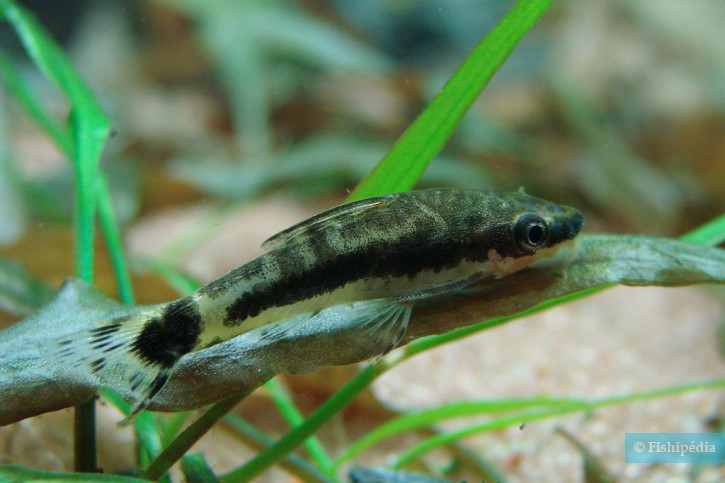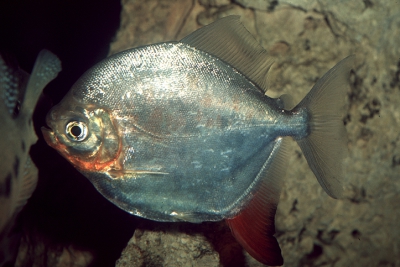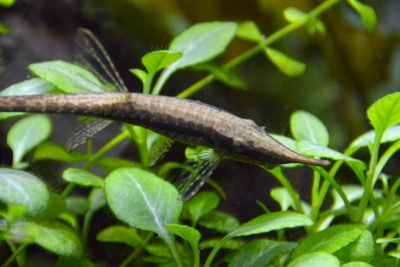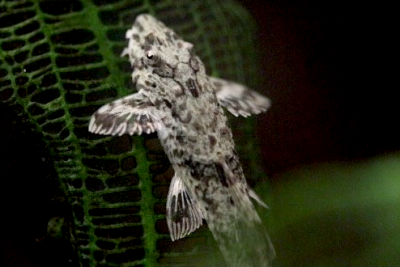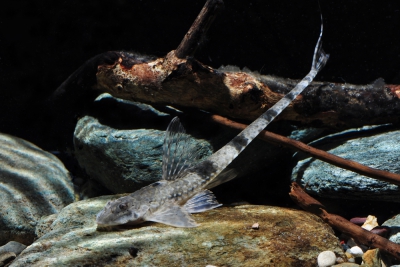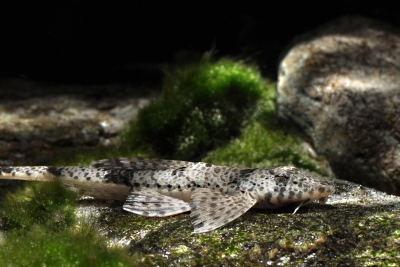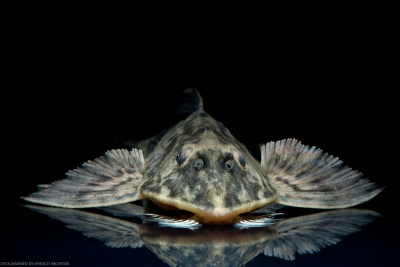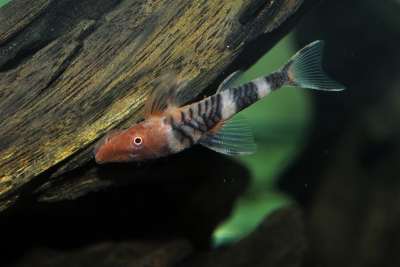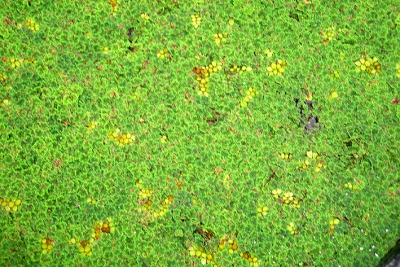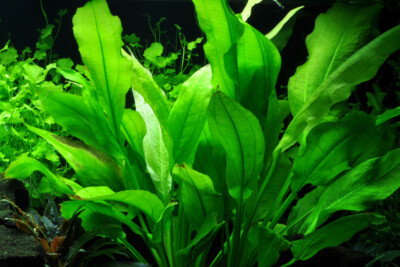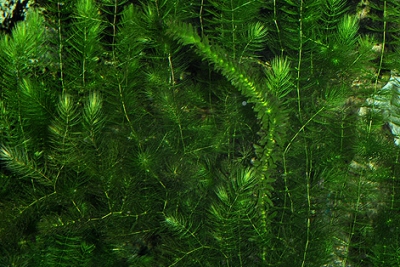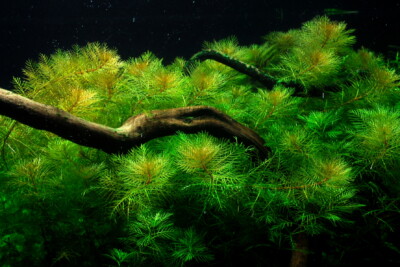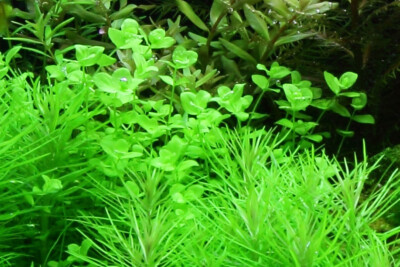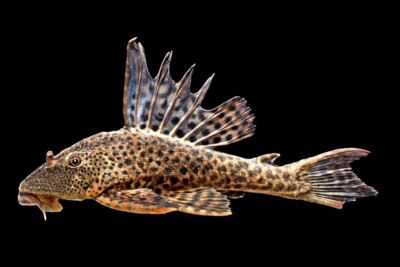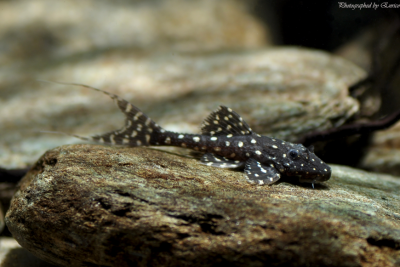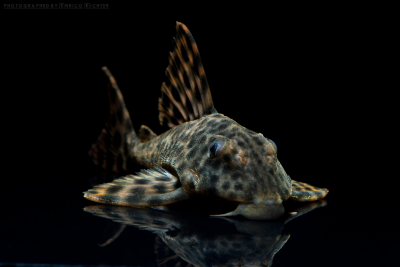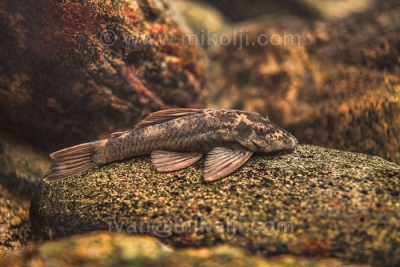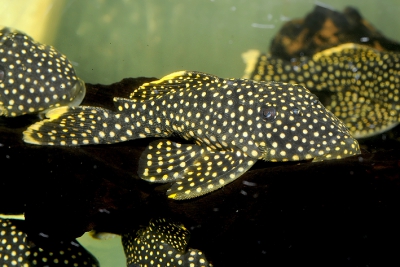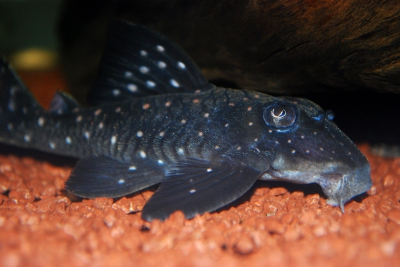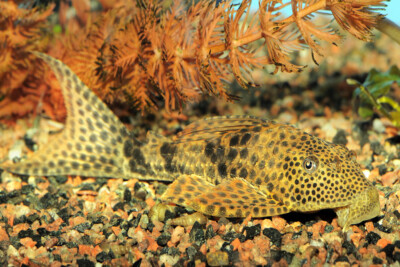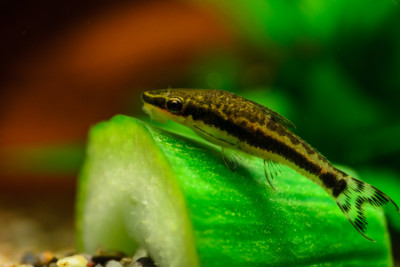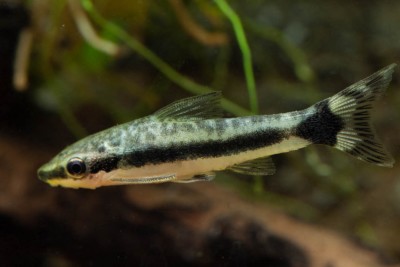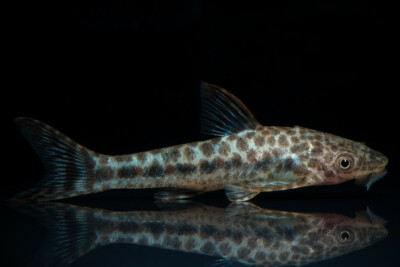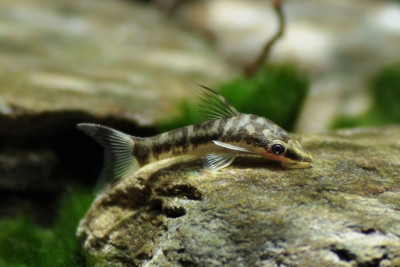carachamita
| Scientific name | Otocinclus macrospilus |
|---|---|
| Descriptor | Eigenmann & Allen |
| Year of description | 1942 |
| IUCN category (World) | LC |
| Family | Loricariidae |
| Genus | Otocinclus |


Introduction
L'carachamita
It is one of the most common species of carachamita found in the aquarium hobby after carachamita vittatus. It is often mistakenly marketed, as many of its relatives, under the name of carachamita affinis orMacrotocinclus affinis.
Who is it?
Morphology
-
Average size3 cm
-
Maximum size4 cm
-
ShapeCatfish
-
Average size3 cm
-
Maximum size4 cm
-
ShapeCatfish
How to recognize This fish ?
The carachamita
Like other Loricariidae, rows of plates cover its body, usually small in size. They have the peculiarity of being able to breathe air thanks to a diverticulum at the junction between the esophagus and the stomach.
It generally has 22 to 23 plates in a longitudinal series. It also has a dark band on the snout that stretches through the eye, to the end of the middle caudal rays and which fades slightly upstream of the spot preceding the caudal, circular in his case.
The entire dorsal area has tiger patterns. The caudal fin is remarkable for its 2 vertical bands.
Sexual dimorphism
As with their relatives, thees carachamita
The males have a small contact organ formed by a whirl of odontodes on the ventral edge of the caudal peduncle, near the base of the caudal fin.
Behaviour & Life cycle
-
dietherbivorous
-
Sociabilitygregarious
-
territorialNo
-
Way of livingdiurnal
The carachamita
It is a very shy and peaceful species that tends to rest on many objects and enjoys environments that provide numerous hiding places.
Reproduction
-
Reproductionovipare qui dépose ses Œufs dans la végétation
The carachamita
The eggs are very adhesive and are most often laid on long leaves. The eggs are not guarded or protected by their parents.
Harmless species
This species does not pose a particular danger to humans if encountered in its natural environment.
Origin and distribution
Geographic distribution & Conservation
The carachamita
Conservation status of populations (IUCN)
What is its habitat?
Natural environment characteristics
-
Temperature21 - 26 °C
-
pH (acidity)5.5 - 7.5
-
gh (hardness)1 - 9
-
FlowMedium and Slow
Biotope presentation
The carachamita
They live in very large groups in the vegetation mats found in these habitats, where they can feed and hide from predators.
Species of the same biotope
Main recommendations for fishkeeping
Deontology
In order to preserve wildlife, if you acquire this animal, it must not be released into the wild. See also, the Fishipedia charter.
Fishipedia supports the practice of responsible and environmentally friendly aquarium keeping. We encourage maintenance if it is motivated by a desire to understand the biological functioning of living things and if it is done with respect for animal life.
We believe that aquaristics is an opening to the discovery of aquatic environments, especially freshwater, and that this knowledge is necessary to better protect and respect these environments. Logically, we refute the compulsive purchase of animals that would not find a sufficient and / or adapted place in the host aquarium.
Our recommendationsThese tips apply to adult species from breeding. With regards to water conditions, wild species or close relatives must be kept under the same conditions as in their area of origin.
-
Min volume60 liters
-
Population min6
-
Temperature21 - 26 °C
-
pH (acidity)5.5 - 7.5
CharacteristicsThe characteristics below apply for adult species. They correspond to an average of cases, validated in maintenance condition.
-
Difficulty breedingThe farming difficulty is relative. It depends on experiments already carried out with similar species. First, it takes into consideration the robustness of the species, the ease of recreation of a favorable environment and the general behaviour with the other inhabitants of the aquarium.moderate
-
Robustnesstolerant
-
Behaviourpeaceful
-
Availabilityoccasional
Recommended equipment from our partners
-
Aquarium
-
Filtration
General reminders
It is strongly advised to read the complete dedicated file and to get information on the feedbacks of maintenance of the envisaged animal, this to avoid any potential conflict whose end result is generally the death of the individual (or the other inhabitants). It is important not to overload your aquarium to limit pollution. This will make maintenance easier.
In nature, animals are subject to weather conditions and live in waters with variable characteristics. The recommendations offered by our team for aquarium maintenance are a guidance and cannot be assimilated to scientific datas.
General reminder on maintenance datas
Le démarrage d'un aquarium est une partie primordiale pour l'équilibre et le bien-être des poissons. Lorsque l'on met en eau un aquarium, l'eau passe naturellement par un cycle biologique : le cycle de l'azote. Celui-ci dure environ trois semaines. Tous les 2 jours, nous vous conseillons de tester votre eau jusqu'à ce que le taux de nitrite soit à zéro pendant plusieurs jours d'affilée.
Pour accélérer ce cycle, vous pouvez utiliser un activateur de bactéries comme JBL Denitrol. Cette solution riche en bactéries vivantes et enzymes permet une mise en place rapide du cycle de l'azote. Les poissons peuvent alors être introduits plus rapidement.
Il est important de tester l'eau de son aquarium régulièrement pour maintenir un environnement sain pour les poissons et les autres habitants. Les tests d'eau permettent de mesurer les niveaux de différents paramètres tels que le pH, la dureté totale, ainsi que les taux de nitrates, de nitrites et d'ammoniaque.
Pour réaliser ces tests, vous pouvez utiliser des produits d'analyse spécialisés tels que JBL ProScan qui permet de réaliser un diagnostic de l'eau directement via un smartphone. Il existe également des coffrets de tests plus classiques de bandelettes, comme JBL PROAQUATEST.
En cas d’usage de l’eau du robinet, vous pouvez utiliser un conditionneur d’eau de type Biotopol de JBL pour éliminer les substances nocives comme le chlore, le cuivre, le plomb et le zinc. Les conditionneurs d'eau garantissent une meilleure santé aux poissons et une meilleure croissance des plantes.
Chlorine and chloramine are dangerous for the health of animals. Used to disinfect water, these agents are present in significant quantities in tap water. We recommend using an anti-chlorine agent every time you change the water. In addition to chlorine, treatments and medicines sold for aquarium use sometimes contain dangerous heavy metals in high doses.
Specific needs for the carachamita
The carachamita is a species which lives naturally at a temperature between 21 °C and 26 °C. For proper maintenance, the temperature should never exceed the 29°C for long periods. Nitrate levels should remain below 50mg/L. To keep the water clean and unpolluted, plan on changing 20% to 30% of the water volume each month.
The breeding of this species is accessible on condition of being well informed about its needs in aquarium . Any cohabitants must be chosen with care to avoid the loss of animals.
This species is generally available in specialized shops or from aquarium clubs. Specimens that have been bred for a long time are easier to breed, but special water parameters must be respected.
Cohabitation & Environment
Being a gregarious fish, it is advisable to install at least 6 individuals in an aquarium of 60 liters minimum (for 45 cm of frontage). Group maintenance is a prerequisite to ensure their well-being. Lonely individuals tend to quickly become stressed and become especially susceptible to disease. Although sometimes certain groups can "merge", mixing several gregarious species living in the same zone of life is not recommended if the volume is not consequent.
The carachamita is a peaceful species that generally does not exhibit behavioral problems in a community aquarium.
It should be noticed that this species should not be kept with large crustaceans or fish, as it would become a prey of choice. Smaller species should preferably be inserted in the aquarium some time before the larger ones. Moreover, if you want to breed it, it is better to put them in a specific aquarium.The species enjoys a particularly vegetation-rich environment. The addition of plants will provide many useful hiding places for resting. These areas are also conducive to possible breeding in the aquarium.
Tips for feeding
The carachamita is herbivorous.
This species can eat dry food (flakes, pellets), fresh food and frozen food. To avoid deficiencies, it is recommended to vary the types of food.
You should not overfeed your residents to avoid polluting the water. For most species, it is better to feed a few small portions each day rather than one large meal.
Food recommendations from our partner JBL - Products PRONOVO
-
Sticks
Reproduction protocol
-
Maintenance difficultymoderate
-
Spawning cleaningNo
-
egg-laying protectionNo
-
Fry protectionNo
Hybridization risks
In general, it is advised not to mix several species of the same genus or different varieties of the same species, to avoid the risks of hybridization.
These animals might interest you
These plants might interest you
Plants play a crucial role in aquariums, both for their ability to filter water by absorbing excess nutrients and for their aesthetic contribution. They provide fish with natural hiding places, can serve as breeding sites, and generally help maintain the overall balance and optimal conditions of the aquarium. The selection presented here includes species from the same regions as the species described on this page, although they do not necessarily come from its exact natural biotope.
To go further
Sources & Contributions
Participation & Validation
The Fishipedia team and specialist contributors are committed to providing high-quality content. However, although the information comes from scientific sources or testimonials from specialists, the cards may contain inaccuracies.

Damien Boulard

Benoit Chartrer
Translation
Translation done with the valuable contribution of our translators, who make this information available to a wider audience. We sincerely thank them for their commitment.
Bibliographic references
The Neotropical Cascudinhos: Systematics and biogeography of the Otocinclus catfishes (Siluriformes: Loricariidae) - Schaefer, S.A - Proceedings of the Academy of Natural Sciences of Philadelphia - 1997.
A new Otocinclus (Siluriformes: Loricariidae: Hypoptopomatinae) from the Rio Juruena Basin, central Brazil - Ribeiro, A. C. - ZOOTAXA - 2016.
A new species of Otocinclus (Siluriformes: Loricariidae) from the Rio Madeira drainage, Brazil - Mayer, F. - Roberto E. Reis - Copeia - 2010.
Scientific partners
Species of the same family
Same genus
Species of the same biotope
